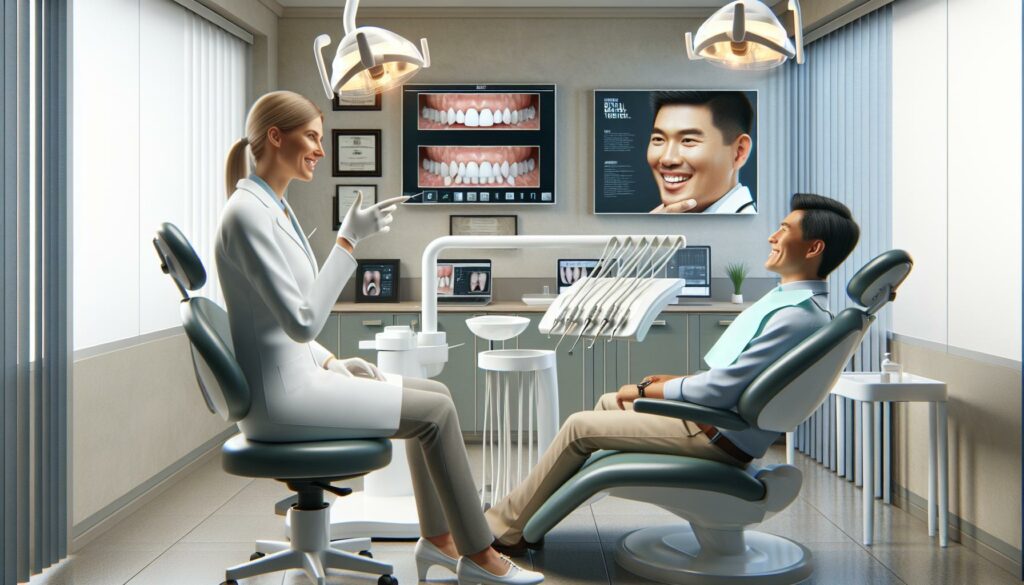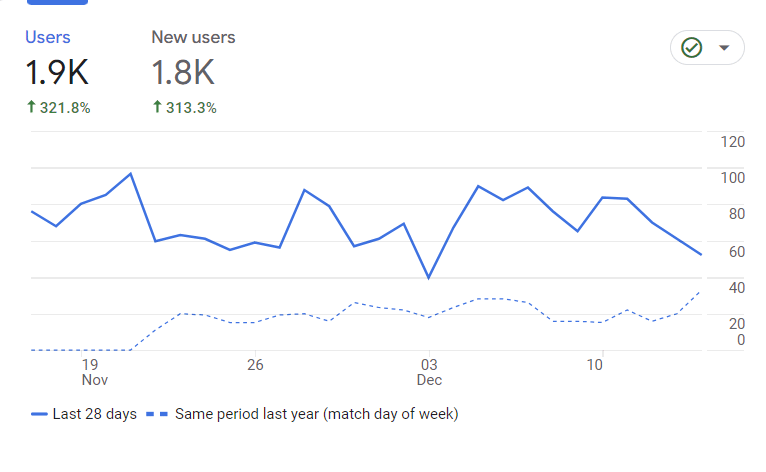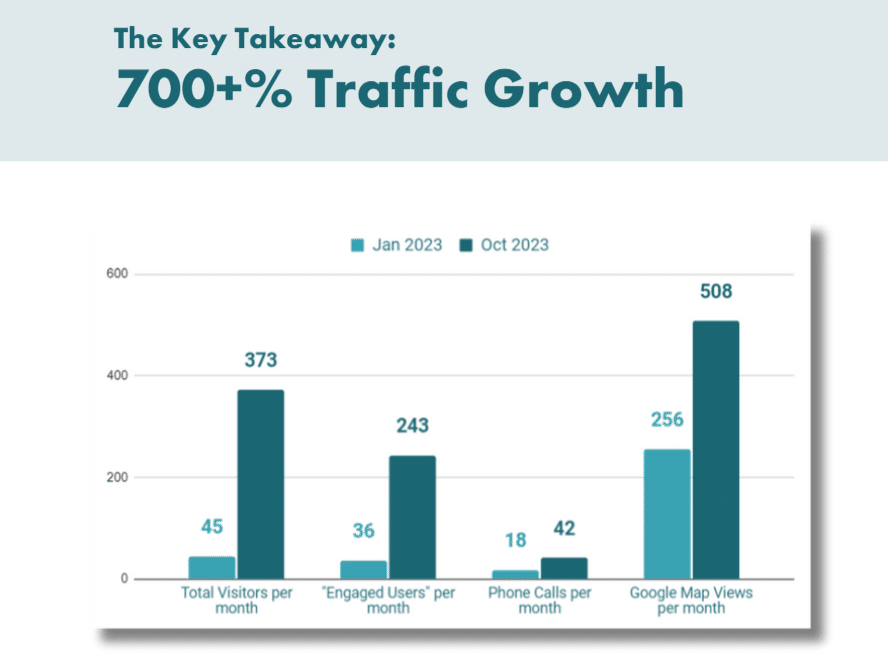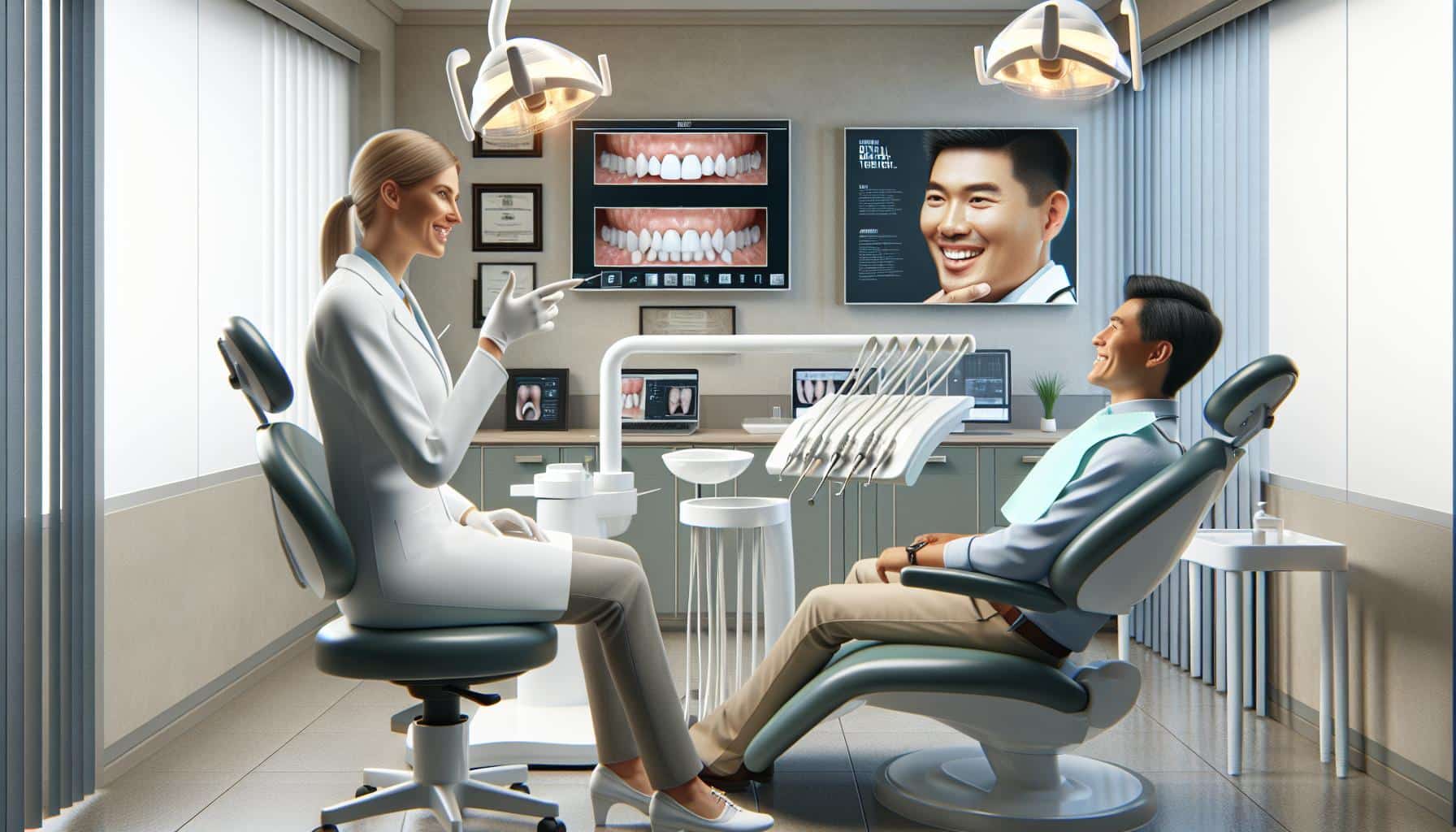Dental practices, like any other business, need to invest in marketing to attract new patients and retain existing ones. However, determining the right amount to spend on marketing can be challenging. While there is no one-size-fits-all answer, there are some industry standards and best practices that dental practices can follow to develop an effective marketing budget.
According to a Deloitte survey of Chief Marketing Officers, the average marketing budget rose to 11.8% in 2022, reflecting pre-pandemic levels. This increase in spending primarily pertains to digital marketing, with only 2.9% of this surge attributable to traditional advertising spend. However, healthcare organizations, including dental practices, generally spend 2% – 12% of their gross revenue on marketing, which is consistent with the overall healthcare industry trends. The truth is every dental practice is unique, and the amount they spend on marketing will depend on various factors, such as their location, competition, and target audience.
In this article, we will explore how much dentists should spend on marketing and provide some best practices to help dental practices maximize their marketing budget. We will look at different sources and industry standards to provide a comprehensive overview of dental marketing budgets. By the end of this article, you will have a better understanding of how much you should be spending on marketing and how to make the most of your marketing budget.
Understanding the Importance of Marketing in Dentistry
Marketing is an essential aspect of any business, including dental practices. It is the process of promoting and advertising your services to potential patients to increase revenue and growth. In today’s competitive market, dental practices need to have a strong marketing strategy to stand out from the crowd and attract new patients.
Dentists who invest in marketing can see a significant return on investment. By reaching out to potential patients, they can increase their patient base, leading to higher revenue and growth. Marketing can also help dentists build their brand and reputation in the community, making them the go-to choice for dental services.
Marketing can take many forms, such as digital advertising, social media marketing, email marketing, and more. Each of these methods can help dentists reach a different audience and achieve different goals. For example, social media marketing can help dentists connect with younger patients, while email marketing can help them retain existing patients.
In addition to attracting new patients, marketing can also help educate patients about the importance of dental health. By providing valuable information through blog posts, videos, and other content, dentists can establish themselves as experts in the field and build trust with their patients.
Overall, marketing is an essential component of any successful dental practice. By investing in marketing, dentists can increase their patient base, revenue, and growth, while also building their brand and reputation in the community.
Dentists’ Average Marketing Budget
Determining how much dentists should spend on marketing can be a challenging task, as it depends on various factors like the stage of the dental practice’s life cycle, revenue, and marketing goals. However, as per industry standards, dental practices should allocate between 2% to 12% of their gross revenue on marketing.
According to a Deloitte survey of Chief Marketing Officers, the average marketing budget rose to 11.8% in 2022, reflecting pre-pandemic levels. This increase in spending primarily pertains to digital marketing, with only 2.9% of this surge attributable to traditional advertising spend. Dental practices require different marketing budgets in different stages of their life cycles. Some estimates for these different life stages include the following:
- Start-up practices: Ideally, the average startup marketing budget should be 11.2% of overall revenue. However, the exact percentage can differ depending on your clinic’s appetite for growth.
- Established practices: Based on industry benchmarks, an established dental practice generating $1,000,000 in annual revenue would spend $40,000-70,000 per year on marketing, or $3,333-5,833 per month. An established dental practice generating $2,000,000 in annual revenue would spend $80,000-140,000 per year, or $6,666-11,666 per month.
It is essential to keep in mind that dental marketing budget should be considered as an investment rather than a cost. A well-planned and well-executed marketing strategy can help attract new patients, retain existing ones, and increase revenue. Therefore, it is crucial to allocate an appropriate budget for marketing activities that align with your practice’s goals and objectives.
Key Components of a Dental Marketing Budget
When creating a dental marketing budget, it’s important to consider the key components that will help you achieve your practice’s goals. The following sub-sections outline some of the most important components to consider.
Website and SEO
Your dental website is the foundation of your digital marketing efforts. It’s important to invest in a high-quality website that is optimized for search engines. This includes a user-friendly design, fast loading times, and relevant content. SEO efforts should also be considered to ensure that your website ranks well in search engine results pages. This includes keyword research, on-page optimization, and link building.
Advertising and Digital Marketing
Advertising and digital marketing can help you reach a wider audience and generate more leads. This includes pay-per-click (PPC) advertising, social media advertising, and email marketing. It’s important to invest in digital marketing efforts that align with your practice’s goals and target audience.
Patient Acquisition and Retention
Acquiring new patients and retaining existing ones is essential for the long-term success of your dental practice. This includes efforts such as referral programs, patient reviews, and patient education. It’s important to track patient acquisition cost and patient lifetime value to ensure that your marketing efforts are generating a positive return on investment.
Community Engagement and Customer Service
Engaging with your local community and providing excellent customer service can help build trust and loyalty with your patients. This includes efforts such as sponsoring local events, participating in community outreach programs, and providing exceptional customer service to your patients.
Overall, a successful dental marketing budget should include a balance of these key components. By investing time and effort into these areas, you can help your practice grow and achieve its goals.
Factors Influencing Dentists’ Marketing Spend
When it comes to determining how much a dentist should spend on marketing, there are several factors that come into play. Here are some key considerations to keep in mind:
Age and Growth of the Dental Practice
The age and growth of a dental practice can have a significant impact on how much a dentist should spend on marketing. Newer practices may need to invest more heavily in marketing to build their patient base and establish a foothold in the local market. Established practices with a loyal patient base may be able to scale back their marketing spend somewhat.
Competition and Market Environment
The level of competition in the local market and the overall market environment can also influence how much a dentist should spend on marketing. In a highly competitive market, dentists may need to invest more in marketing to stand out from the crowd. Conversely, in a less competitive market, dentists may be able to get by with a smaller marketing budget.
Services and Treatments Offered
The types of services and treatments offered by a dental practice can also influence marketing spend. For example, a practice that specializes in orthodontics, Invisalign, implants, or teeth whitening may need to invest more heavily in marketing to reach potential patients who are interested in those specific procedures.
Overall, there is no one-size-fits-all answer to how much a dentist should spend on marketing. Each practice is unique, and the factors outlined above should be taken into consideration when determining an appropriate marketing budget. By carefully assessing the needs of their practice and the competitive landscape, dentists can make informed decisions about how much to invest in marketing.
Strategies to Optimize Dental Marketing Spend
As a dentist, it’s important to invest in marketing to attract new patients and retain existing ones. However, it’s crucial to optimize your marketing spend to get the best return on investment (ROI). Here are some strategies to help you make the most of your dental marketing budget:
Leveraging SEO and Local Directories
Search engine optimization (SEO) is the process of optimizing your website and online presence to rank higher in search engine results pages (SERPs). By improving your SEO, you can attract more organic traffic to your website and generate more leads.
One way to improve your local SEO is by listing your practice on local directories like Google My Business, Yelp, and Healthgrades. These directories help potential patients find your practice when they search for dental services in your area.
Utilizing Social Media Platforms
Social media platforms like Facebook, Instagram, and Twitter can be powerful tools for dental marketing. By creating engaging content and building a following, you can attract new patients and keep existing ones engaged.
One effective social media strategy is to showcase before-and-after photos of your patients’ dental work. This can help build trust and show potential patients the quality of your services.
Investing in Patient Value and Retention
Acquiring new patients is important, but retaining existing ones can be even more valuable in the long run. By investing in patient value and retention, you can increase the lifetime value of your patients and generate more revenue over time.
One way to increase patient value is by offering loyalty programs or referral rewards. This can incentivize patients to refer their friends and family to your practice, which can lead to more new patients.
Monitoring Metrics and ROI
To optimize your dental marketing spend, it’s important to track your metrics and ROI. This can help you identify which strategies are working and which ones need improvement.
Some key metrics to track include cost per acquisition (CPA), conversion rate, and lifetime value. By monitoring these metrics, you can make data-driven decisions about your marketing budget and strategy.
In conclusion, optimizing your dental marketing spend requires a strategic approach. By leveraging SEO and local directories, utilizing social media platforms, investing in patient value and retention, and monitoring metrics and ROI, you can make the most of your marketing budget and attract more patients to your practice.
The Impact of External Factors on Dental Marketing
When it comes to dental marketing, there are several external factors that can impact the success of a campaign. In this section, we will discuss two significant external factors that have a significant impact on dental marketing: the role of ADA and other regulatory bodies and the effect of global events like pandemics.
The Role of ADA and Other Regulatory Bodies
The American Dental Association (ADA) is a professional organization that represents dentists in the United States. The ADA plays a significant role in shaping the dental industry, and its policies and recommendations can have a significant impact on dental marketing.
For example, the ADA provides guidelines on dental fees, which can impact the marketing strategies of dental practices. Dentists may need to adjust their marketing campaigns to reflect changes in fees or to highlight their competitive pricing.
Other regulatory bodies, such as state dental boards, also play a role in dental marketing. These bodies may have specific rules and regulations regarding advertising and marketing practices, which dental practices must follow to avoid penalties.
The Effect of Global Events Like Pandemics
Global events like pandemics can have a significant impact on dental marketing. For example, the COVID-19 pandemic has forced many dental practices to close temporarily, which has made it difficult for them to market their services effectively.
However, the pandemic has also created new opportunities for dental marketing. For example, many dental practices have started offering tele-dentistry services, which allow patients to receive dental care remotely. Dental practices can market these services to patients who may be hesitant to visit a dental office in person.
In addition, the pandemic has highlighted the importance of dental health, which can be an opportunity for dental practices to market their services. Dental practices can emphasize the importance of regular dental checkups and cleanings to maintain good oral health, which can help prevent more serious dental problems down the line.
Overall, external factors like the role of ADA and other regulatory bodies and global events like pandemics can have a significant impact on dental marketing. Dental practices must be aware of these factors and adjust their marketing strategies accordingly to remain competitive in the industry.
The Future of Dental Marketing
As the world becomes increasingly digital, dental marketing strategies must evolve to keep up with the changing times. With the rise of online advertising and search engines, digital marketing for dentists has become more important than ever.
One of the most effective ways to reach potential patients online is through Google Ads. By targeting specific keywords and demographics, dentists can ensure that their practice appears at the top of search engine results pages (SERPs) when people search for relevant terms. This can lead to increased visibility and more clicks to their website.
However, as more and more dental practices invest in Google Ads, the competition for ad space will only become more fierce. Dentists will need to develop more sophisticated marketing strategies to stand out from the crowd and attract new patients.
One potential avenue for growth is to focus on startup or new dental practices, also known as de novo practices. These practices often have less competition and can carve out a niche in the market with the right marketing strategies. By targeting specific demographics or offering unique services, de novo practices can differentiate themselves from established practices and attract new patients.
Overall, the future of dental marketing is bright for those who are willing to adapt and innovate. By staying up-to-date with the latest digital marketing trends and developing effective marketing strategies, dentists can continue to grow their practices and attract new patients.
Conclusion
In conclusion, determining the appropriate marketing budget for a dental practice can be a challenging task. However, by using a combination of knowledge, benchmark data, and consultation with marketing experts, dentists can develop a marketing plan that can help them gain traction in their local market.
It is important to note that the amount of money spent on marketing can vary depending on the size and location of the clinic, as well as the level of competition in the area. Dentists should also consider their goals and the type of marketing strategies that would be most effective for their practice.
While benchmark data can provide a useful starting point, it is not always the best indicator of how much a dentist should spend on marketing. Dentists should also consider their own unique circumstances and consult with marketing professionals to develop a comprehensive marketing plan that meets their specific needs.
Ultimately, the key to a successful marketing strategy is to remain consistent and persistent in your efforts. By working with experienced writers and marketing consultants, dentists can develop a plan that will help them stand out from their competitors and attract new patients to their practice.















